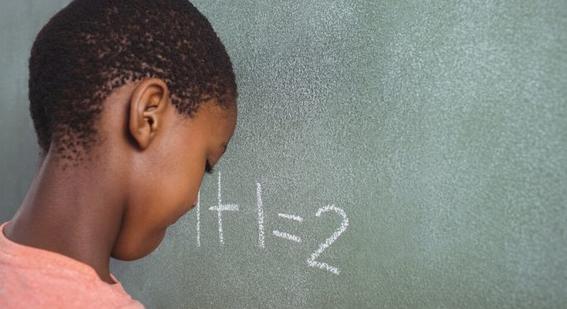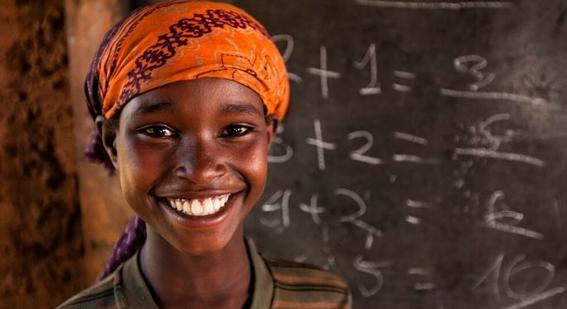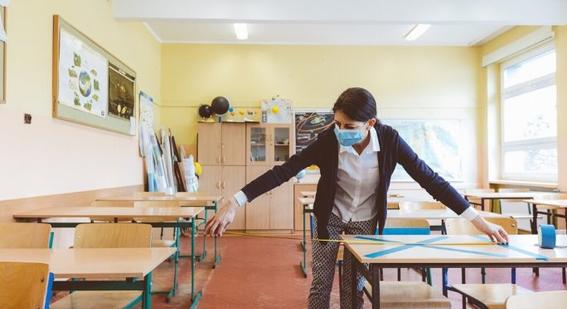How do you solve a problem like COVID-19?
In this post we will look at specific and practical initiatives that schools can undertake to support the return towards normal in the wake of a crisis like COVID-19.

The Covid-19 pandemic is a ‘Black Swan’ event, as defined by Nassim Nicholas Taleb:
What we call here a Black Swan (and capitalize it) is an event with the following three attributes.
First, it is an outlier, as it lies outside the realm of regular expectations, because nothing in the past can convincingly point to its possibility. Second, it carries an extreme 'impact'. Third, in spite of its outlier status, human nature makes us concoct explanations for its occurrence after the fact, making it explainable and predictable.
I stop and summarize the triplet: rarity, extreme 'impact', and retrospective (though not prospective) predictability. A small number of Black Swans explains almost everything in our world, from the success of ideas and religions, to the dynamics of historical events, to elements of our own personal lives.
The Black Swan: The Impact of the Highly Improbable; Taleb, Nassim Nicholas, Penguin, 2008
In the face of such events there is understandably a high degree of uncertainty and disorder while governments, authorities, and individuals take drastic evasive action. Particular, perhaps, to a global pandemic is a dizzying sense of the magnitude and scope of the change. To return exactly to normal life as it was before the crisis is to invoke the crisis to return, and yet we must continue to strive to return to as close to normalcy as possible in order to limit the disruption and losses to learning and the economy.
The government is responsible for significant branches of the crisis response in education, setting policy and providing guidance based on an intelligent and informed view of the macro context. But implementation – the long, hard, important work of turning policy and guidance into concrete meaningful action – is the domain of principals and teachers.
In this post we will look at specific and practical initiatives that schools can undertake to support the return towards normal in the wake of a crisis.
Work with the community
As we saw in the third post in this series, schools play an important multifaceted role in the community. Principals and teachers can use their footing in the community to help the recovery and return to normalcy phases in a number of ways.
Use deep understanding of the local context
As we have seen, crises disproportionately affect the most disadvantaged and vulnerable in society. Efforts in returning children to school should place considerable focus on these families. The Pareto principle is likely to apply here: it will take maybe 20 per cent of effort expended to secure the return to school of the majority of students in an education system, but 80 per cent of effort will be required to return the most at-risk students to the classroom.
There is no one-size-fits-all model for how schools should work with communities, but as a fundamental principle the plan to re-open schools must consider the local context. Useful questions to consider include:
* What proportion of the school’s cohort is considered ‘at risk’? This should take into account the local cultural context, socioeconomic profile, and the severity with which the crisis affects the local area.
* What is the community’s concern beyond basic safety? For example, are there risks involved in travelling to school? Are parents struggling with childcare? Are children going hungry? What are parents’ financial circumstances and what are the implications of sending their child to school?
* Which stakeholders beyond parents need to be engaged and involved in the return to school? For example, religious leaders, community groups, employers, and influential groups.
* How best to build consensus within the school staff? Teachers need to understand and trust in the measures in place within the school, so it is essential that principals consider how and when to engage teachers, and any other school staff, in the planning, implementation, and communication stages.
Communicate with transparency
In designing a response to crisis or disaster situations, the World Bank recommends that governments:
Use existing community networks where available. If trusted community hubs/networks exist, it makes good sense to use them. This might include working through communication conduits, such as schools, churches, and women’s groups.
Communication During Disaster Recovery; Lisa Roberts, Alice Mortlock; Global Facility for Disaster Reduction and Recovery/The World Bank
Schools, as a key community hub, play a critical role in disseminating public health and safety messaging. They also play a vital role in implementing health and safety measures in the wake of a crisis. For example, many schools reopening during the pandemic will be operating under social distancing policies and precautions. In addition, hygiene education will have become part of the curriculum.
Maintaining the trust of the community is essential to reopening. Schools must be transparent and open about the new precautions in place and the actions they will take in the event of an emergency in order to gain the support of parents and community stakeholders. This can be achieved through a number of different measures: from contacting parents with details through established channels (e.g. WhatsApp, email, newsletter, etc.) to organising site visits prior to reopening.
Central to maintaining trust is being honest and open about unknown factors. Crises and recovery responses are, by their nature, fast-moving and evolving. Openness about the unknown helps to pave the way for necessary modifications and changes of approach, which would otherwise inflict damage on trust if previously communicated as a certainty.
There will be gaps in information available from government, particularly in the early days of a crisis. It’s important that school staff recognise these gaps and do not attempt to fill them with their own interpretations. Rumour and misinformation can often exacerbate issues and erode trust at a time when it is needed most.
It is also important to ensure that communication is two-way. Principals should ensure that there are opportunities for questions and answers, understanding that parents may have reasonable concerns.
Continue to work with parents
Forty years’ worth of research has shown that having parents who are engaged in their learning has been shown to have a significant positive impact on a child’s school attendance and performance (Emerson, et al, 2012). The continued engagement and involvement of parents is required to make sure that students returning to school stay in school. This is especially important when there is a risk of resurgence for the crisis (e.g. a second wave or local lockdown, aftershocks of an earthquake, etc.).
A period of remote learning, however, could present an opportunity to help students achieve more in their education. This may be the first time that parents have engaged more deeply in the content of the school curriculum, the things their child is struggling with, and the mode of pedagogy used by the school. For some parents this will be a spur to get more involved in supporting their child. For others this will have exposed areas of weakness in their own knowledge.
Schools may want to consider this an opportunity to further cement their role within the community through providing or signposting adult education that will support these parents to support their children. This may already be within schools’ remit, but if not it could be a serious and significant commitment at a period of heightened stress. Parameters and boundaries should be established in order to avoid over-loading teachers.
Diagnosis and recovery curriculum
As we saw from the 2005 Pakistan earthquake, getting children back into the classroom is the first step in getting their learning back on track, but it is far from the last. Students will not return to the classroom ready to pick up the curriculum as-planned for entirely understandable reasons.
Creating a safe and welcoming learning environment
An often under-looked part of being at school is routine and structure. Schools have rules and policies that must be fairly and consistently upheld in order to be respected. When schools reopen with restrictions in place – consider the social distancing measures in schools reopening during the pandemic – this is even more important.
Rules and expected standards of behaviour should be explained clearly to children early in their return, routinized and reinforced – but with compassion and understanding. Crises are often rooted in personal tragedies and children may be dealing with losses or trauma. Social and emotional learning should form a core part of the return-to-school, alongside subject curricula (Cambridge University Press, Cambridge Assessment, 2020).
Empathy and care is required to ensure that school is a welcoming environment, but also ordered and optimised for learning to resume.
Understand the learning loss that has occurred
After a significant period of disruption, learning loss will have occurred. We have seen this in crisis situations, but it is also well-documented in the phenomenon of summer learning loss (Kerry, Davies, 2003). Again, the poorest are most likely to bear the brunt of this issue (Andrabi, Daniels, Das, 2020).
Diagnostic assessment to understand the level and nature of the learning loss should be an early priority. Importantly, diagnostic assessment does not mean formal tests, and can be conducted as a low-stakes part of everyday teaching and learning.
In some countries and contexts, there is a reluctance to return to topics and content that has previously been delivered. However, it is important to recognise that learning lost is likely to be a prerequisite (or sub-routine) that supports further learning and fluency (Abadzi, 2020). Teachers should plan to refresh students’ knowledge – and deliver again, where necessary – from before the period of disrupted learning. It is unreasonable to expect that students will be able to pick up successfully from where they left off.
Plan the curriculum according to students’ needs
Once the learning loss is understood, teachers will need to adapt the curriculum to meet students’ needs. In practice, this means that the first one or two months of teaching will be busier than normal, with a much smaller gap between lesson planning and delivery. Teachers may also need to manage a much wider range of ability in classrooms, with some students’ learning more adversely affected by the disruption.
The recovery curriculum may stay in place for longer than expected. The World Bank has estimated an average 0.6 years of immediate learning loss resulting from a 5-month school closure. Some countries closed schools for less time, but others will have kept schools closed for much longer. The reality is that for some students, the pandemic will leave permanent scarring on their education. For the time-being, however, teachers will need to take the return to school week-by-week, month-by-month.
While schools play a vital role in adjusting the curriculum to meet the level of returning students, there is also a vital role to be played by policymakers in setting realistic, fair, and reasonable policy for progression and national assessments, which we will address in the next post in this series.
Prepare for further disruption
The return to school may be a fragile period. In the current context of reopening schools during a pandemic, it’s fraught with the risk of year-group bubbles being forced to self-isolate, and the threat of local lockdowns. While it is natural to hope that there will be no further disruption, it is advisable to prepare in case there is.
Local emergency action plans
After health and safety, access to education must be the priority of a crisis response. Principals should consider drawing up local emergency plans – either independently, or in consortium with other local schools – to set policies and procedures in place in the event of school closures, and to assist with contingency planning.
There is much to be learned from this recent period of mass school closures, and there is much value in capturing what worked, what did not, and what could be done better in the future. Particular care and attention should be given to supporting children who are most at-risk who will be worst affected by any future closure.
Any plan should consider the following elements as a minimum:
- Healthcare and nutrition – how can the school support its students stay safe and healthy during a closure?
- Safeguarding and child safety – what are the risks in the local context, which groups are most likely to be affected, and how can the school maintain contact during a closure?
- Access to learning – what learning provision will be in place during a school closure?
- Communication – how and when will the school and individual teachers be in direct contact with students and their families?
Emergency action plans can and should be updated over time to reflect the changing circumstances and context. However, crises happen quickly and this preparation work will buy time when it is needed most.
Prioritise productive learning
Mapping out the tent-pole topics in the curriculum – that is, the big central ideas that support other elements of the curriculum – and prerequisite understanding and skills is a valuable activity that can be meaningfully completed alongside the diagnostic assessment and recovery curriculum planning.
Teachers should consider creating or sourcing additional homework activities that support and develop concepts around these tent-pole topics. These may serve two purposes:
- Extension activities for students who have been least affected by the disruption, which can enable these students to work productively and independently while the teacher provides more dedicated support to students who need it.
- In the case of another school closure, these activities can be set as remote learning to help support and reinforce essential learning that will enable students to catch back up quicker when school re-opens.
Where the school does not have the budget to buy-in suitable resources, or there are no appropriate freely available resources, there is great benefit to collaborating between schools in order to share out the work of creating the resources and build a supportive community of practice.
Note that while much has been said about the potential for digital learning to widen access, analysis from IIEP-UNESCO indicates that print still has a valuable role to play. The choice of format and medium should take account of what is most likely to work for the widest range of students in the local context.
Sole responsibility does not lie with schools
There is much here that can be done by schools, principals, and teachers. Too much, perhaps, depending on the size of the school. I come back to think about that school in Uttar Pradesh, 100 students per teacher. How thinly can we realistically expect to stretch teachers during a period of crisis? There is clearly a role for strong and decisive school leadership to direct efforts towards the highest priorities, to make most effective and impactful use of the time and resources available.
However, crisis response does not fall solely on the shoulders of individual schools. Extraordinary times call for extraordinary action from policymakers, Ministers, and government. In the final post in this series we will look at the levers the state can pull to enable teachers and principals to undertake this essential work to best effect.




